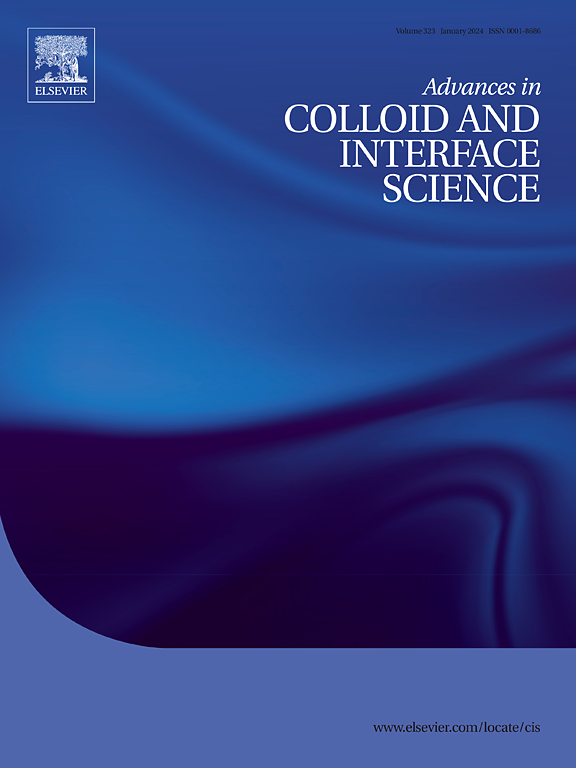From silk components to emulsions
IF 19.3
1区 化学
Q1 CHEMISTRY, PHYSICAL
引用次数: 0
Abstract
This review is the first to offer a comprehensive exploration of the complex interplay between silk polymorphism, its unique self-assembly properties, and its versatility in forming various silk-based emulsions, with a particular emphasis on the interfacial dynamics at oil/water interfaces. Silk demonstrates remarkable potential as a stabilizing agent through diverse stabilization mechanisms, resulting in the formation of distinct emulsion types. Three primary classes of silk-based emulsions are highlighted: (1) Film-stabilized emulsions, where silk in solution forms an elastic, gel-like 2D film at the oil/water interface; (2) Pickering emulsions, achieved by the adsorption of silk nano-assemblies onto oil droplets; and (3) Emulsion-filled gels, where oil droplets are encapsulated within a gel network using silk's inherent gelling properties. Additionally, the interfacial behaviour of silk—encompassing interfacial rheology and conformational changes—at the oil/water interface is discussed. A detailed analysis of the mechanisms driving silk self-assembly, along with the factors influencing this process, is also provided. The complexity of silk's self-assembly adds significant challenges to the classification of silk-based emulsions and a thorough understanding of their stabilizing mechanisms. Finally, this review addresses existing knowledge gaps and offers potential future directions for advancing research in this area.

从丝绸成分到乳剂
这篇综述首次全面探讨了丝的多态性、独特的自组装特性及其在形成各种丝基乳液中的多功能性之间的复杂相互作用,并特别强调了油/水界面的界面动力学。丝绸通过多种稳定机制显示出作为稳定剂的巨大潜力,从而形成不同类型的乳液。重点介绍了三种主要的丝基乳剂:(1)膜稳定乳剂,其中溶液中的丝在油/水界面形成弹性的凝胶状二维膜;(2)酸洗乳液,通过丝纳米组件吸附在油滴上实现;(3)乳液填充凝胶,其中油滴被包裹在凝胶网络中,利用丝绸固有的凝胶特性。此外,本文还讨论了含丝界面在油水界面上的界面流变和构象变化。详细分析了蚕丝自组装的机理以及影响这一过程的因素。丝绸自组装的复杂性为丝绸乳液的分类和对其稳定机制的透彻理解增加了重大挑战。最后,本文综述了现有的知识差距,并提出了该领域未来研究的潜在方向。
本文章由计算机程序翻译,如有差异,请以英文原文为准。
求助全文
约1分钟内获得全文
求助全文
来源期刊
CiteScore
28.50
自引率
2.60%
发文量
175
审稿时长
31 days
期刊介绍:
"Advances in Colloid and Interface Science" is an international journal that focuses on experimental and theoretical developments in interfacial and colloidal phenomena. The journal covers a wide range of disciplines including biology, chemistry, physics, and technology.
The journal accepts review articles on any topic within the scope of colloid and interface science. These articles should provide an in-depth analysis of the subject matter, offering a critical review of the current state of the field. The author's informed opinion on the topic should also be included. The manuscript should compare and contrast ideas found in the reviewed literature and address the limitations of these ideas.
Typically, the articles published in this journal are written by recognized experts in the field.

 求助内容:
求助内容: 应助结果提醒方式:
应助结果提醒方式:


